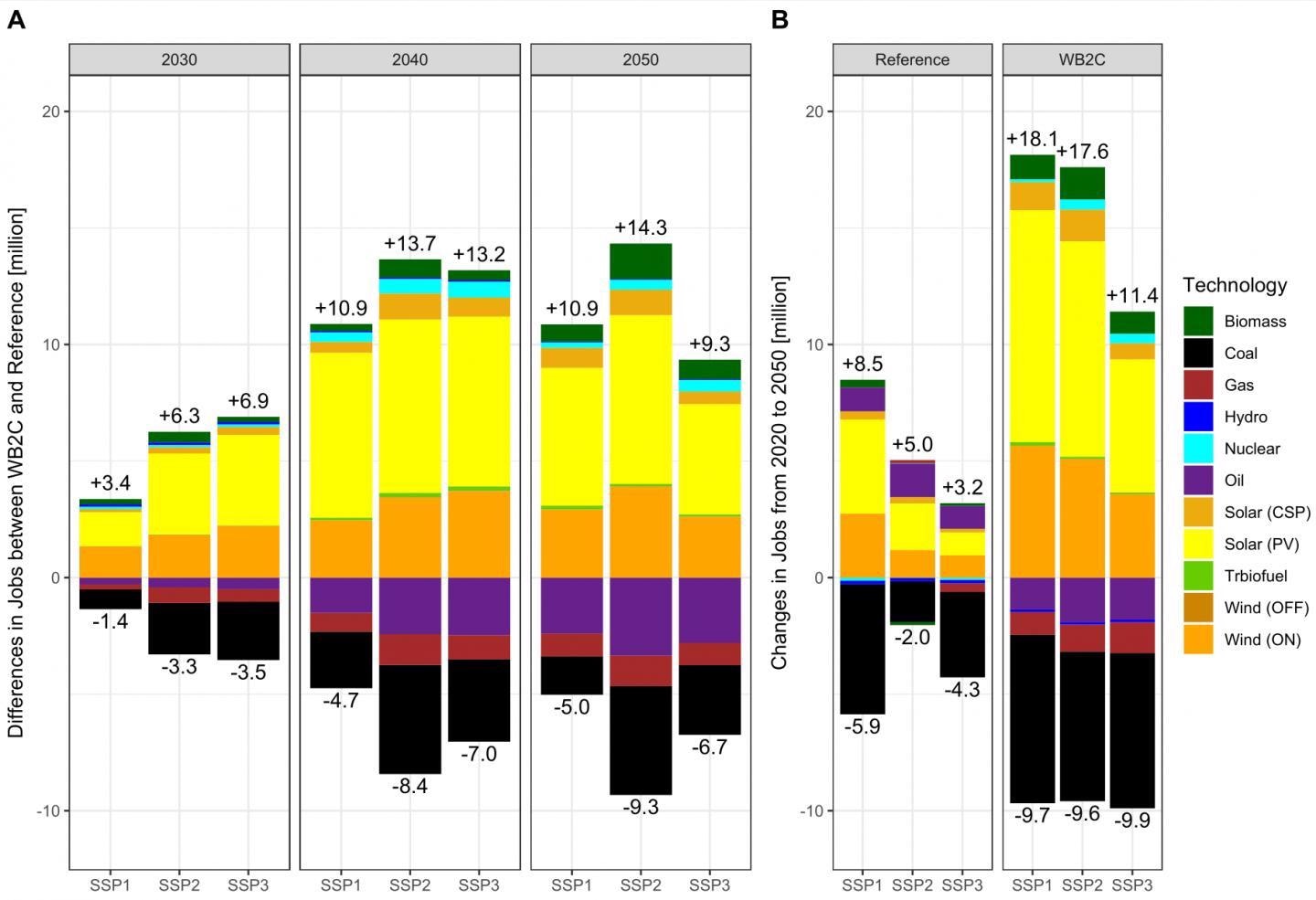Scientists developed a global dataset of job footprints in 50 countries and employed a model to analyze the effect of attempting to meet the Paris Agreement global climate target of staying well below 2 °C on energy sector jobs.
 The figure shows the changes in energy sector jobs by energy technology comparing different scenarios (see axis description) and across the different SSPs. Image Credit: Pai et al./One Earth.
The figure shows the changes in energy sector jobs by energy technology comparing different scenarios (see axis description) and across the different SSPs. Image Credit: Pai et al./One Earth.
The researchers identified that the steps involved to attain the target would increase net jobs by about 8 million by 2050. This is mainly due to gains in the solar and wind industries. The investigation was published on July 23rd, 2021, in the One Earth journal.
Currently, an estimated 18 million people work in the energy industries—a number that is likely to increase, not decrease, to 26 million or by over 50% if we reach our global climate targets. Manufacturing and installation of renewable energy sources could potentially become about one-third of the total of these jobs, for which countries can also compete in terms of location.
Johannes Emmerling, Study Corresponding Author and Environmental Economist, RFF-CMCC European Institute on Economics and the Environment
The research undertaken by Emmerling and associates is attributed to the comprehensive dataset of over 50 countries, comprising major fossil fuel producing economies. The researchers combined the dataset with an integrated assessment model to make job projections.
The model helps understand the development of humans and the choices societies make that affect each other. Earlier studies mostly depended on jobs data for OECD countries and later generalized the results for other countries with the help of a multiplier.
“The energy transition is increasingly being studied with very detailed models, spatial resolutions, timescales, and technological details,” states Emmerling.
Yet, the human dimension, energy access, poverty, and also distributional and employment implications are often considered at a high level of detail. We contributed to this gap by collecting and applying a large dataset across many countries and technologies that can also be used in other applications.
Johannes Emmerling, Study Corresponding Author and Environmental Economist, RFF-CMCC European Institute on Economics and the Environment
According to the model put forth by the scientists, around 84% of the jobs in 2050 will be in the renewables sector, 11% in fossil fuels and 5% in nuclear. They further reinstate that even though the fossil fuel extraction jobs, which are around 80% of current fossil fuel jobs, will decrease rapidly, the losses will be compensated by gains in solar and wind manufacturing jobs.
Extraction sector jobs are more susceptible to decarbonization, so there needs to be just transition policies in place.
Sandeep Pai, Study First Author, The University of British Columbia
Pai recently graduated with a PhD in Resources, Environment, and Sustainability.
“For example, the mobility of manufacturing jobs will be useful in areas where decarbonization is rife. In many cases, fossil fuel workers also hold political influence because of their history and high rates of unionization among others, so as we move to low carbon sources, it is important to have a plan in place for the general acceptability of climate policies,” adds Pai.
The scientists further intend to investigate the shifts in education requirements, skill levels, and wages that might result from trying to meet the global climate target of the Paris Agreement. They also expect other data analysts to apply it for running multiple scenarios, further clarifying the extent of jobs, as the model is available to all the various groups globally.
Journal Reference:
Pai, S., et al. (2021) Meeting well-below 2 °C target would increase energy sector jobs globally. One Earth. doi.org/10.1016/j.oneear.2021.06.005.